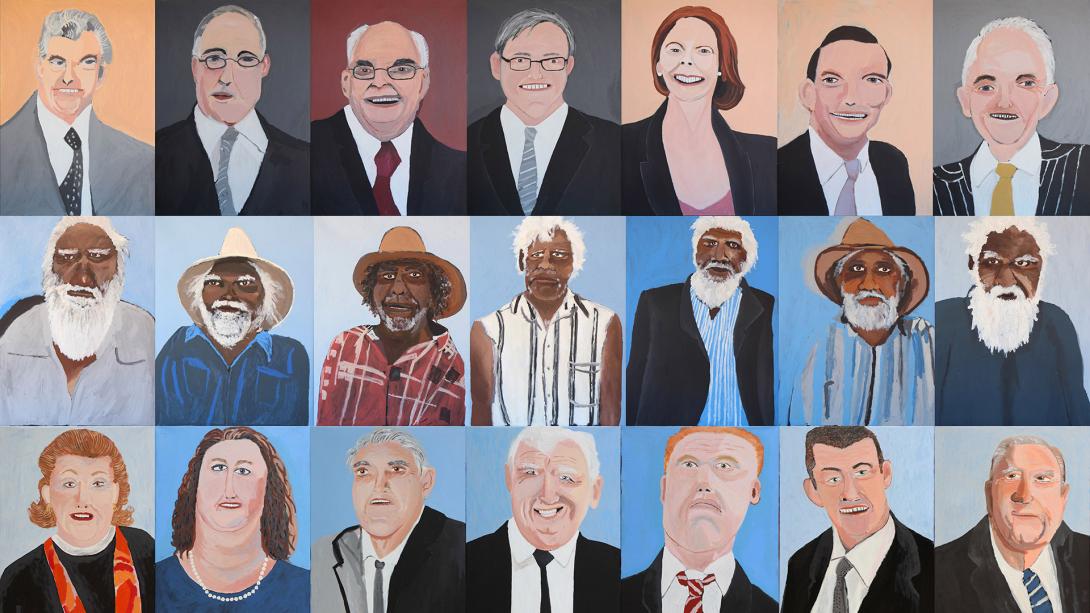Vincent Namatjira
Born 1983 Alice Springs, Australia
Lives and works in Indulkana, Anangu Pitjantjatjara Yankunytjatjara (APY) Lands, South Australia, Australia
A painter from Indulkana in in South Australia, Vincent Namatjira has established himself as a subversive and witty portraitist. Vincent is the great-grandson of the renowned Arrernte watercolour artist Albert Namatjira. Vincent was born in Alice Springs and spent his early childhood at Hermannsburg. When his mother passed away unexpectedly, Vincent was removed from his family and raised in foster homes. Intensely aware of his family’s history, he yearned to return to the central desert. He moved back to Hermannsburg as a young adult and then settled with his wife’s family at Kanpi, on the APY Lands, where he learnt to paint in a customary dot painting style. Since 2013, Vincent has been painting portraits of important figures, both personally familiar and famously political. He is an acute observer of national and international politics and the connections between leadership, wealth, power and influence.
Vincent Namatjira has also worked with the QAGOMA Children's Art Centre to develop a project for APT9 Kids.

Vincent Namatjira / Western Arrernte people / Australia b.1983 / Seven Leaders (series) 2016 / Arthur Roe Collection, Melbourne / © Vincent Namatjira / Image courtesy: The artist, Iwantja Arts and THIS IS NO FANTASY
Vincent Namatjira explores the connections between leadership, wealth, power, race and influence through playful and witty portraits.
For the first time, three of his most recent series of portraits of influential Australians are on display in APT9. The first series focuses on the seven Prime Ministers who have governed the country during the artist’s lifetime. The second features the seven tjilpi, senior artists and lawmen who are leaders of the APY communities in South Australia where Namatjira lives, while the third portrays Australia’s seven richest people. The juxtaposition of a group of strong Aṉangu leaders alongside the country’s richest and most powerful people – all of whom are non-Indigenous – allows the viewer to consider the place of Australian First Nations leaders within these social, political, cultural and economic hierarchies.
According to Namatjira:
I’m interested in painting strong figures and leaders, we see them on the news and wonder how and why they make their decisions . . . I like to paint with a little bit of humour, humour takes away some of their power and keeps us all equal.
NAMATJIRA, Vincent
1983
- present
Full profile
for NAMATJIRA, Vincent
